Technology
How to delete multiple emails at once on iPhone
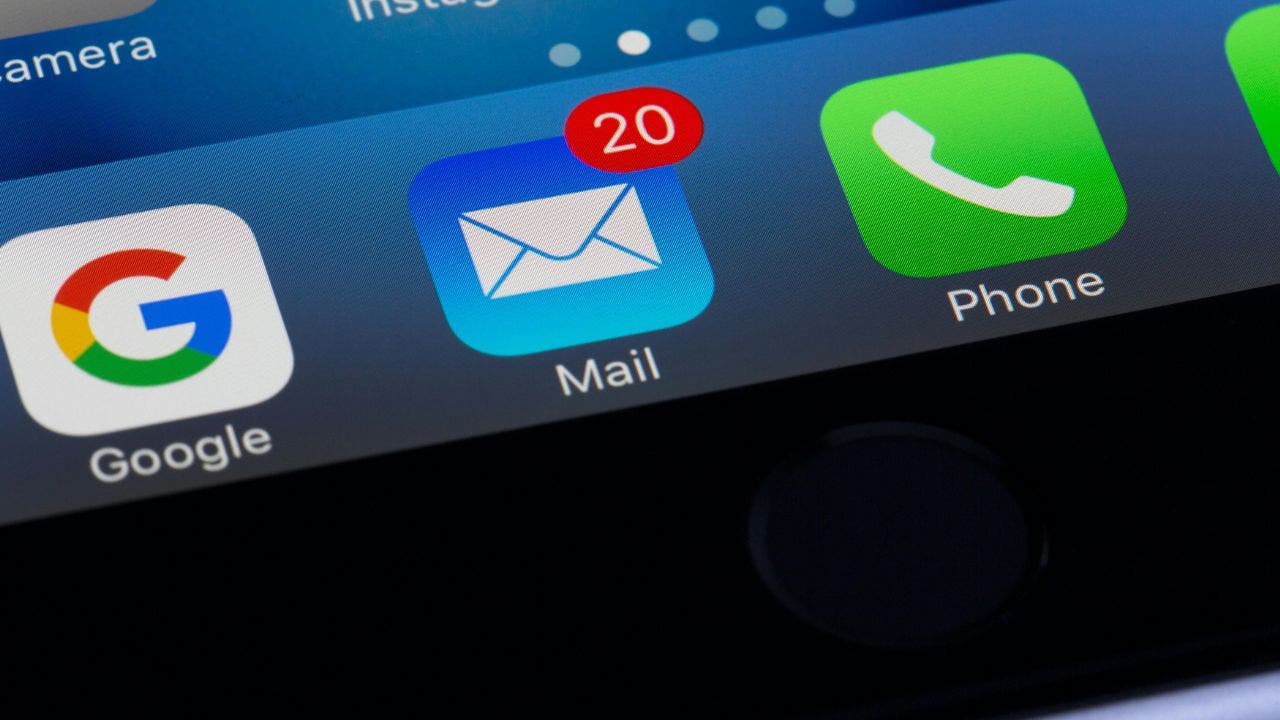
Managing your inbox can quickly become a daunting task. Many of us find ourselves drowning in a sea of unread emails, making it challenging to stay organized. Dale from Lowell, Arizona, recently reached out with a common frustration:
“My iPhone 13; How do I erase multiple emails from my inbox? Deleting each one individually is time consuming and tedious. Currently 1900 plus.”
Don’t worry, Dale. You’re not alone in this struggle. Let’s dive into some easy steps to declutter your inbox. If you want to delete multiple emails at once on Android, here’s how to do it.
GET SECURITY ALERTS, EXPERT TIPS – SIGN UP FOR KURT’S NEWSLETTER – THE CYBERGUY REPORT HERE
Mail app on iPhone (Kurt “CyberGuy” Knutsson)
The Mail app method to delete multiple emails on iPhone
The built-in Mail app on your iPhone 13 offers a straightforward way to delete multiple emails at once:
- Open the Mail app
- Navigate to your inbox and tap on it
- Tap Select in top-right corner
- Select the emails you want to delete by tapping the circles next to them.
- For a quick selection, tap the first email, then slide your finger down the list.
- Once you’ve chosen your emails, tap Trash at the bottom right.
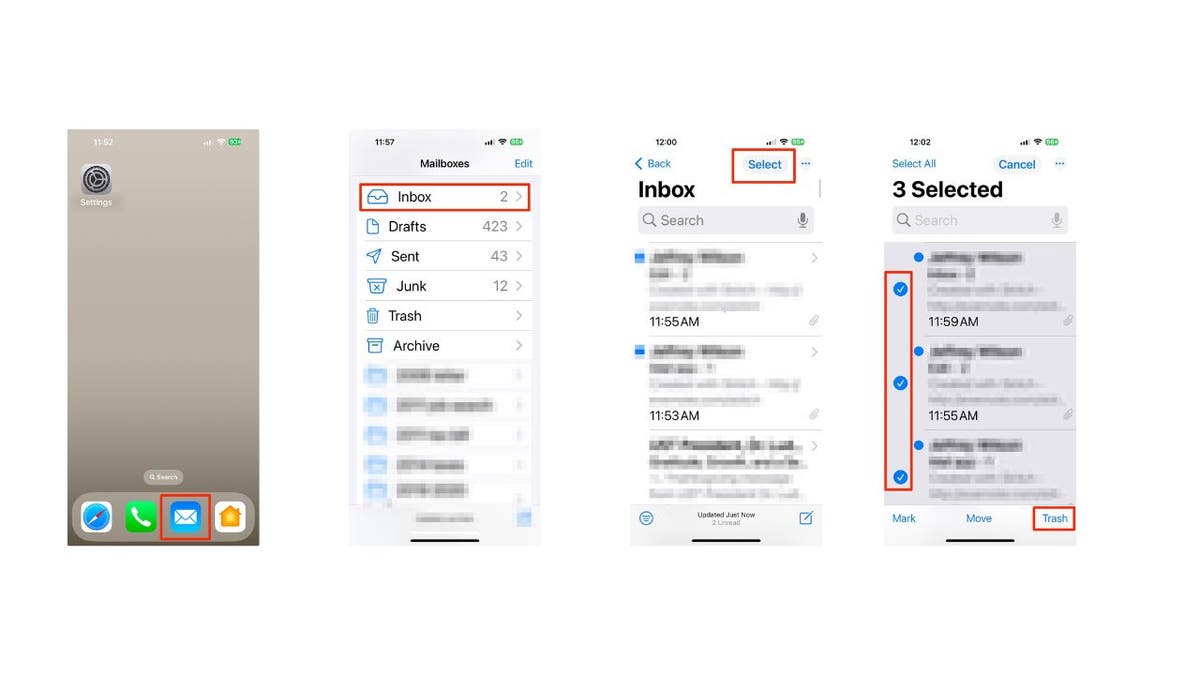
Steps to delete emails in the iPhone Mail app (Kurt “CyberGuy” Knutsson)
BEST ANTIVIRUS FOR MAC, PC, IPHONES AND ANDROIDS – CYBERGUY PICKS
Bulk deletion: Tackling thousands of emails at once on iPhone
When faced with an overwhelming number of emails, try this method:
- Open the Mail app
- Navigate to your inbox and tap on it
- Tap Select in top-right corner
- Tap Select All at top-left
- Hit Trash
- Confirm your decision by clicking Trash All
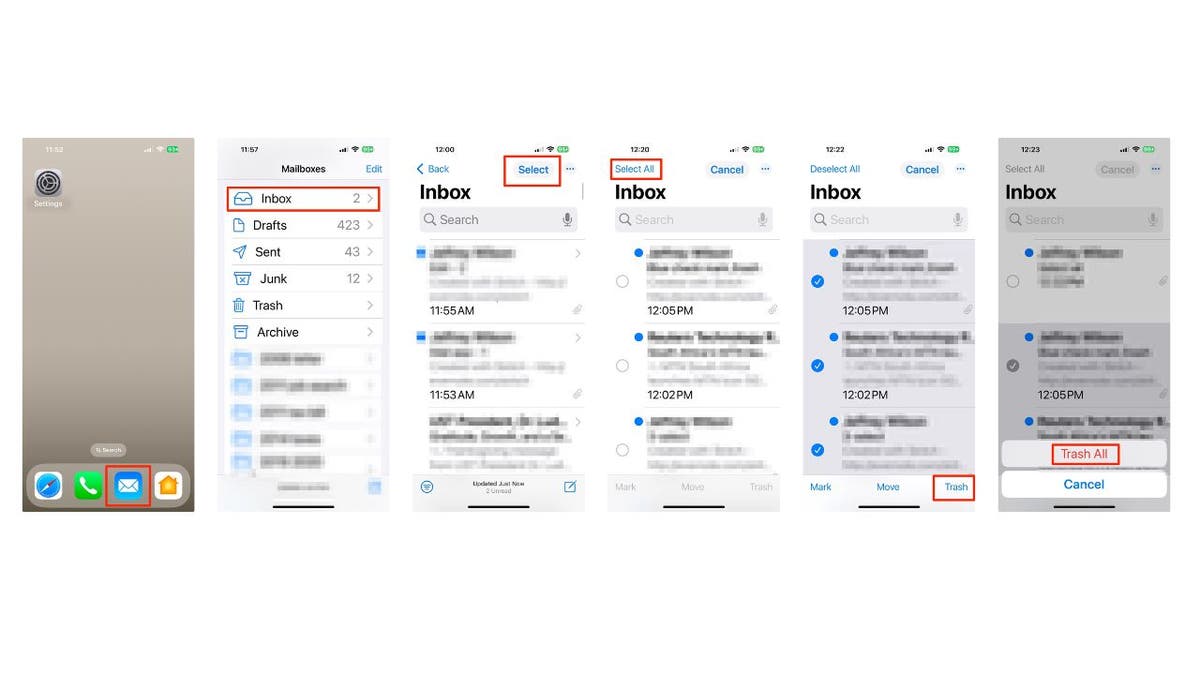
Steps to bulk delete emails in the iPhone Mail app (Kurt “CyberGuy” Knutsson)
MUST-TURN-OFF PRIVACY SETTINGS ON YOUR IPHONE IN IOS 18.1
The web browser approach to bulk deleting emails on iPhone
For even more control over bulk deletions, consider using your iPhone’s web browser:
- Open Safari
- Go to your email provider’s website and log in to your account.
- Look for an Edit or Select option
- Choose Select All or a similar function
- Find the Delete or Trash button and tap it
- It will ask you to confirm your decision by clicking Delete all.
This method is particularly effective for quickly clearing out large numbers of emails.
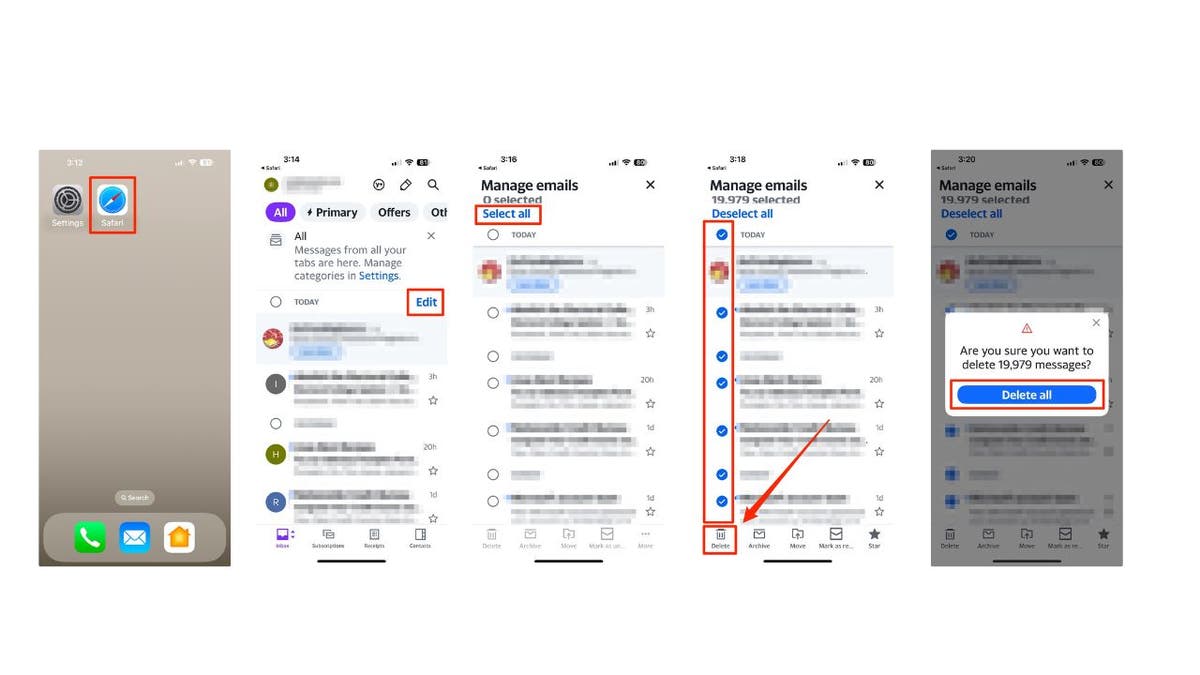
The web browser approach to bulk deleting emails on iPhone (Kurt “CyberGuy” Knutsson)
HOW TO USE IPHONE’S MIC MODE FOR CRYSTAL CLEAR, NOISE-FREE CALLS
Set trash or archive as the default on iPhone
To ensure that deleted emails are automatically sent to your preferred location, follow these simple steps to configure your iPhone settings. This setting helps you efficiently organize your emails by automatically directing deleted messages to the appropriate folder, saving time and reducing inbox clutter.
- Go to Settings
- Scroll down and tap Apps
- Click Mail
- Click Mail Accounts
- Select Your Account

Steps to set trash or archive as the default on iPhone (Kurt “CyberGuy” Knutsson)
- Scroll down to Account Settings and click it
- Then click Advanced
- Select Deleted Mailbox or Archive Mailbox to streamline your email management
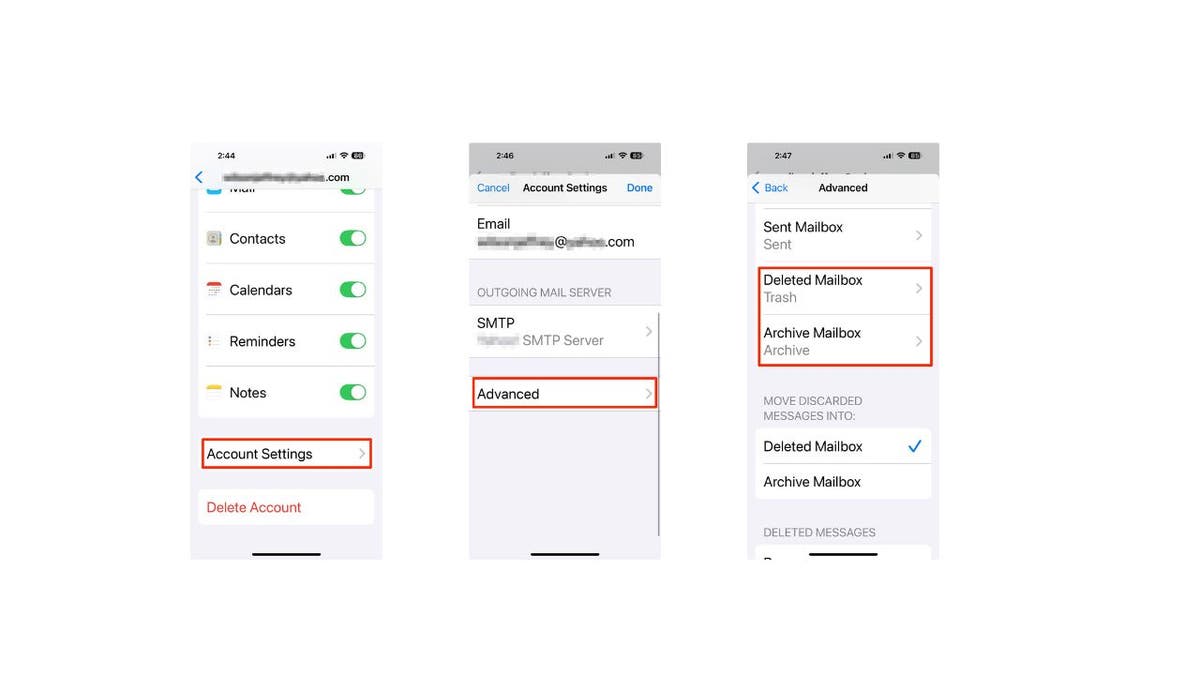
Steps to set trash or archive as the default on iPhone (Kurt “CyberGuy” Knutsson)
SUBSCRIBE TO KURT’S YOUTUBE CHANNEL FOR QUICK VIDEO TIPS ON HOW TO WORK ALL OF YOUR TECH DEVICES
Kurt’s key takeaways
Managing a cluttered inbox can feel overwhelming, but with these techniques, you’ll be on your way to a more organized inbox. Remember, it’s not just about deleting emails. It’s about creating habits that prevent inbox overload in the future. Consider setting up filters for recurring emails. By implementing these strategies, Dale and other iPhone users can transform their email management from a tedious chore into a quick and efficient task.
What’s the most overwhelming digital clutter challenge you’re currently facing, and how is it impacting your daily productivity? Let us know by writing us at Cyberguy.com/Contact.
For more of my tech tips and security alerts, subscribe to my free CyberGuy Report Newsletter by heading to Cyberguy.com/Newsletter.
Ask Kurt a question or let us know what stories you’d like us to cover.
Follow Kurt on his social channels:
Answers to the most asked CyberGuy questions:
Copyright 2024 CyberGuy.com. All rights reserved.
Technology
Meta’s new AI video tool can put you in a desert (or at least try to)

Meta is launching new video editing tools that will let you transform videos using AI. The tool, which is only free for a “limited time,” gives you more than 50 preset prompts you can use to edit your video, allowing you to set a theme, change the background, and tweak what you’re wearing.
The presets are presented similarly to how you would choose a filter on Instagram. You can have Meta AI restyle your clip as a video game or anime, make it appear as if it was taken in the desert, dress you in an AI-generated tuxedo, and more. The tool only works for the first 10 seconds of your video, though. It’s rolling out now in the US and “more than a dozen” countries in the Meta AI app, the Meta.AI website, and the Edits app.
I tried the feature out for myself, and my results certainly didn’t look as good as the examples posted on Meta’s website. I uploaded a video of my parents’ dogs digging a hole in the backyard, and asked Meta AI to make it look like they were in the desert. Meta AI turned the ground orange, put some (purple?) cacti in the foreground and background, and for some reason gave my dogs a shimmery glow. Then, when I asked it to restyle a video of myself as an anime character, Meta AI gave me fluorescent pink eyes and lips.
You can share the edited videos directly to Facebook and Instagram, or put them in the Discover feed in the Meta AI app. Though you can’t use custom prompts right now, Meta says “you’ll be able to edit videos alongside Meta AI with your own text prompts” later this year.
Technology
When clicks turn into scams on Facebook ads

NEWYou can now listen to Fox News articles!
Scam ads on Facebook have evolved beyond the days of misspelled headlines and sketchy product photos.
Today, many are powered by artificial intelligence, fueled by deepfake technology and distributed at scale through Facebook’s own ad system.
From fake crypto endorsements by celebrities to malware disguised as video game betas, the landscape of digital scams is smarter, faster and more dangerous than ever.
Join the FREE “CyberGuy Report”: Get my expert tech tips, critical security alerts and exclusive deals, plus instant access to my free “Ultimate Scam Survival Guide” when you sign up!
Facebook login page displayed on a laptop (Kurt “CyberGuy” Knutsson)
DON’T CLICK THAT LINK! HOW TO SPOT AND PREVENT PHISHING ATTACKS IN YOUR INBOX
How Facebook scam ads have evolved with AI and deepfakes
Scammers used to rely on low-effort clickbait, but that era is over. Now, sophisticated schemes are leveraging AI-generated content. Technology is being used to create convincing videos of celebrities endorsing fake products or services. These ads exploit the trust users place in public figures and the perceived legitimacy of Facebook’s advertising platform. These tools can mimic a person’s appearance and voice with alarming accuracy, making it challenging for users to discern real from fake. And these tools are no longer out of reach. Scammers use a mix of freely available AI generators and private networks to mass-produce scam campaigns that look more real than ever.
ONE CLICK COST A FATHER $4 MILLION IN BITCOIN TO VISHING SCAMMERS
Real examples of Facebook scam ads using celebrity deepfakes
On Reddit, users have posted screenshots of bizarre scam ads that made it through Facebook’s filters:
One features an AI-generated video of Kelly Clarkson promoting a suspicious cash giveaway. There are reportedly over 20 accounts using variations of the name “Kelly Clarkson Live.” These ads ask users to comment “Christmas” to receive free money, then instruct them to contact a WhatsApp number to claim their prize, which is a common tactic used to harvest personal information or initiate payment scams.
AI CYBERSECURITY RISKS AND DEEPFAKE SCAMS ON THE RISE

Screenshots of bizarre Facebook scam ads (Reddit)
Another uses Billie Eilish’s face to endorse a knockoff shopping site. The design mimics standard e-commerce ads, making it easy to fall for, especially for fans or younger users.

Screenshots of Facebook scam ads (Reddit)
How AI tools and deepfake tech power Facebook scam ads
These scams are not the work of lone fraudsters. They are coordinated efforts that mirror real digital marketing operations.
- Deepfake software is used to create fake video footage of celebrities.
- AI voice clones make fake endorsements sound eerily convincing.
- Text generators churn out fake user reviews, comment threads and testimonials.
- Scam kits with ad templates and deployment instructions circulate in private Telegram groups and Discord servers.
These operations are designed to appear legitimate. Landing pages mimic reputable news sites. Comment sections feature AI-written praise. Every element is optimized to build trust and get the click.
Who Facebook scam ads target and why you could be next
Scammers do not just blast out ads at random. They use Facebook’s ad targeting system to handpick the most vulnerable audiences.
- Older users are often targeted with health scams or celebrity cash giveaways.
- Men aged 25-45 are frequently shown crypto or investment ads featuring tech figures.
- Fans of specific celebrities or shows may see fake endorsements tied to those interests.
- Users who click on giveaways or contests are more likely to be targeted again, since Facebook tracks interaction history.
These groups are targeted because they are either perceived as trusting, impulsive or unfamiliar with how digital scams operate.
HOW TO ESCAPE FACEBOOK’S CREEPY AD TRACKING
Why Facebook scam ads keep getting past Meta’s moderation
Despite Meta’s claims of robust ad review, scam ads still make it through frequently and quickly. Here is why:
- Most ads are approved by automated systems that cannot catch nuanced AI fakery.
- Scammers use geographic targeting to show ads in regions less likely to report fraud or where enforcement is weak.
- The ads often run for only a short time before disappearing, making them harder to catch.
Even with tools like facial recognition being tested to detect unauthorized celebrity use, these systems have not been widely implemented. Meanwhile, investigations by consumer advocacy groups and cybersecurity firms have found that a significant portion of crypto-related Facebook ads are fraudulent. With scammers paying for ad space, Meta has little financial incentive to aggressively remove them.
Common signs of Facebook scam ads: What to watch for
Scam ads can be surprisingly well-made, but common themes show up again and again. Watch for:
- Free game betas or giveaways, especially ones that require downloads.
- Celebrity endorsements promoting crypto, weight-loss pills or supplements.
- Mimicked news articles or fake media logos.
- Urgent claims or miracle results, which are classic scam tactics.
If an ad prompts you to download a file, especially a .zip or .rar, it is almost certainly a trap.
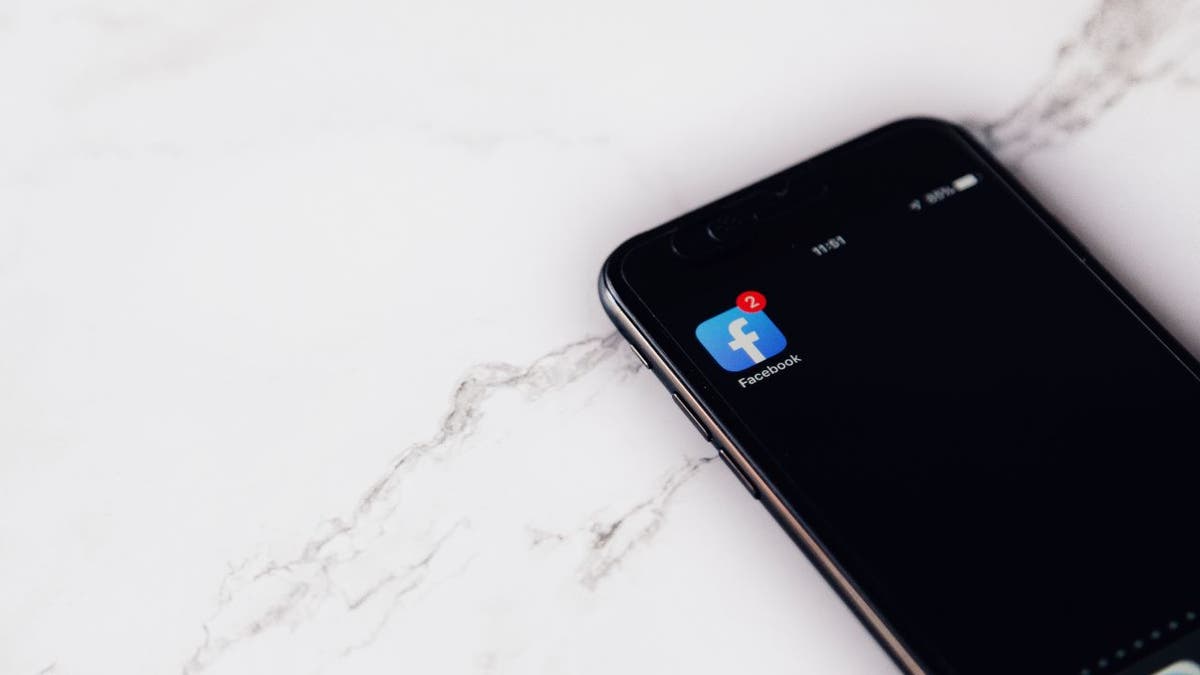
Facebook app on home screen of a smartphone (Kurt “CyberGuy” Knutsson)
HOW TO SPOT THE RED FLAGS FOR THIS LATEST FACEBOOK MARKETPLACE SCAM
How to protect yourself from AI-powered Facebook scam ads
Here is how to stay safe and help others do the same:
1. Check the source: If it is an ad, approach it with extra skepticism. Look it up independently.
2. Do not download files from ads: Especially avoid compressed formats like .zip or .rar, which often contain malware.
3. Verify endorsements: If a celebrity is promoting something, check their official social media or public statements.
4. Report suspicious ads: Even if you are not sure, reporting helps Meta identify fraudulent activity.
5. Talk to friends and family: Especially older adults, who may be more trusting of what they see on Facebook.
WHAT IS ARTIFICIAL INTELLIGENCE (AI)?
6. Be wary of unsolicited messages or friend requests and install strong antivirus software: Scammers often use fake profiles to send scam ads or phishing links via Facebook Messenger or friend requests. Avoid clicking links from unknown contacts. Also, install strong antivirus software, which adds a layer of defense that can block malware from scam links. This protection can also alert you to phishing emails and ransomware scams, keeping your personal information and digital assets safe. Get my picks for the best 2025 antivirus protection winners for your Windows, Mac, Android and iOS devices.
7. Consider using a password manager: If your credentials are compromised, this minimizes the risk of attackers accessing other accounts. A password manager can securely store and generate complex passwords. It will help you create unique and difficult-to-crack passwords that a hacker could never guess. Second, it also keeps track of all your passwords in one place and fills passwords in for you when you’re logging into an account, so that you never have to remember them yourself. The fewer passwords you remember, the less likely you are to reuse them for your accounts. Get more details about my best expert-reviewed password managers of 2025 here.
8. Turn on two-factor authentication (2FA): 2FA can prevent unauthorized logins even if your password is stolen.
9. Regularly update your software and apps: Keeping your operating system, browsers and Facebook app updated ensures you have the latest security patches that can block known vulnerabilities exploited by scammers.
Get a free scan to find out if your personal information is already out on the web.
Kurt’s key takeaways
Scam ads on Facebook are evolving fast, using AI-generated content, fake celebrity endorsements and deepfakes to trick users into clicking. What looks like a game beta or cash giveaway can actually lead to malware, phishing scams or fake crypto schemes. Facebook’s ad review system isn’t catching these in time, which means users need to stay alert. Be skeptical of ads, avoid downloading files, install trusted antivirus software and talk to family members who may be more vulnerable.
Given how widespread and sophisticated scam ads have become on Facebook, do you think Meta should be held more accountable for protecting users, and if so, what actions should they take to better prevent these scams? Let us know by writing us at Cyberguy.com/Contact.
For more of my tech tips and security alerts, subscribe to my free CyberGuy Report Newsletter by heading to Cyberguy.com/Newsletter.
Ask Kurt a question or let us know what stories you’d like us to cover.
Follow Kurt on his social channels:
Answers to the most-asked CyberGuy questions:
New from Kurt:
Copyright 2025 CyberGuy.com. All rights reserved.
Technology
Android 16 is here, but its big redesign isn’t ready

Google rolled out a bunch of new features with Android 16 on Tuesday, but the company appears to be saving its big Material 3 Expressive redesign for a future update. The update doesn’t feature the design language’s revamped elements, and a source tells Android Authority’s Mishaal Rahman that Google is planning to launch the new look on September 3rd, 2025, instead.
With Android 16, Google is starting to roll out support for Live Updates with progress-centric notifications and enhanced settings for users with hearing aids. The updates are coming to Pixel devices first, but according to Google, Android users will have to wait for another update to see Live Updates “fully realized.”
Google officially took the wraps off Material 3 Expressive following a leak last month, which features updates to icon shapes, type styles, and color palettes with “more natural, springy animations” across the Android interface. You can still check out some Material 3 Expressive updates in the Android 16 QPR1 beta that’s available now, but Rahman notes that Google plans on launching more design updates in the next Android 16 QPR1 Beta 2.
Google is expected to include Android’s desktop mode in a September launch as well. The new mode, which builds on Samsung’s DeX platform, optimizes apps and content for large-screen devices. It will allow you to resize multiple app windows across your screens, as well as connect phones and tablets to external displays for a desktop-like experience. Users with a Pixel 8 and up can try out these features in the Android 16 beta, but the rest of us will likely have to wait a few more months.
-

 West5 days ago
West5 days agoBattle over Space Command HQ location heats up as lawmakers press new Air Force secretary
-

 Alaska1 week ago
Alaska1 week agoInterior Plans to Rescind Drilling Ban in Alaska’s National Petroleum Reserve
-

 Education1 week ago
Education1 week agoVideo: Inside Trump’s Attack on Harvard
-

 Technology1 week ago
Technology1 week agoMicrosoft will finally stop bugging Windows users about Edge — but only in Europe
-

 Politics1 week ago
Politics1 week agoRed state tops annual Heritage Foundation scorecard for strongest election integrity: 'Hard to cheat'
-

 World1 week ago
World1 week agoTwo suspected Ugandan rebels killed in Kampala explosion
-

 News1 week ago
News1 week agoVideo: Man Arrested After Attack on Supporters of Israeli Hostages
-

 Politics1 week ago
Politics1 week agoTrump pushes 'Big, Beautiful Bill' as solution to four years of Biden failures: 'Largest tax cut, EVER'
















